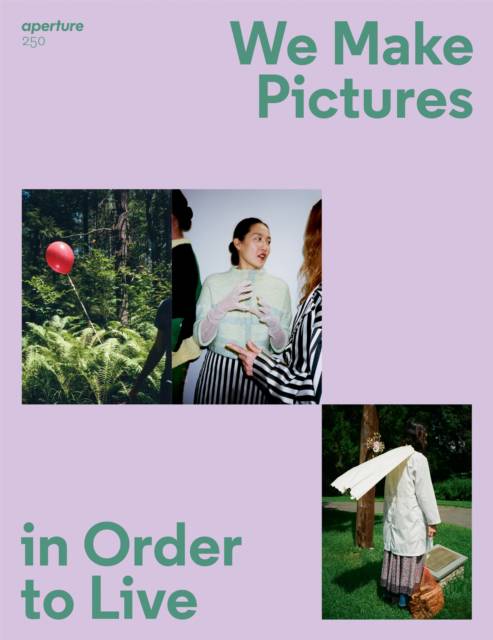
- Afhalen na 1 uur in een winkel met voorraad
- Gratis thuislevering in België vanaf € 30
- Ruim aanbod met 7 miljoen producten
- Afhalen na 1 uur in een winkel met voorraad
- Gratis thuislevering in België vanaf € 30
- Ruim aanbod met 7 miljoen producten
Zoeken
€ 29,95
+ 59 punten
Omschrijving
This spring, Aperture magazine presents issue #250, "We Make Pictures in Order to Live," which explores the relationship between photography and storytelling across generations and geographies. Featuring visual stories that excite, surprise, and illuminate daily life, this issue's title is a nod to the late, celebrated writer Joan Didion, who declared, "We tell ourselves stories in order to live." Aperture contributors explore the quiet poetry-- or clamorous disorder--of the everyday, and attest that making photographs is a way of being aliveIn a sweeping introductory essay, Brian Dillon asks how we might view Didion through photography, and what images come to mind when we think of her writing. Thessaly La Force profiles Bieke Depoorter, who sees documentary photography both as a listening exercise and a form of investigation, blurring the lines between authorship, fiction, and truth. Alistair O'Neill takes stock of Nick Waplington's vibrant records of subcultures on both sides of the Atlantic. Lena Fritsch writes about the "exquisite world-making" of photographer Eikoh Hosoe's collaborative practice. Tiana Reid reconsiders Charles "Teenie" Harris's vivid, midcentury portraits of Black life in Pittsburgh, several of which are published for the first time in this issue. Among the portfolios, Casey Gerald discusses Adraint Bereal's images depicting the agony and ecstasy of being a Black college student in the US today. Yvonne Venegas searches for family ghosts in the Mexican landscape, which poet and novelist Daniel Saldaña París describes as "an exercise in freedom and intelligence." Kamayani Sharma looks at Gauri Gill's images of a community masquerade in the Indian state of Maharashtra, and its potential to reverse power dynamics inherent in seeing and being seen. Durga Chew-Bose meditates on the photographs of Mary Manning--also featured on the cover-- and their poetic sensitivity toward story and the everyday. For Endnote, Aperture poses six questions for the painter Jordan Casteel. In The PhotoBook Review--included within every issue of Aperture--Bruno Ceschel speaks with photographer, bookmaker, and publisher Alejandro Cartagena about his work. Lou Stoppard reviews a trio of photobooks about domestic spaces, and Aperture's editors review a range of recent publications.
Specificaties
Betrokkenen
- Uitgeverij:
Inhoud
- Aantal bladzijden:
- 136
- Taal:
- Engels
- Reeks:
- Reeksnummer:
- nr. 250
Eigenschappen
- Productcode (EAN):
- 9781597115476
- Verschijningsdatum:
- 7/03/2023
- Uitvoering:
- Paperback
- Formaat:
- Trade paperback (VS)
- Afmetingen:
- 234 mm x 305 mm
- Gewicht:
- 771 g

Alleen bij Standaard Boekhandel
+ 59 punten op je klantenkaart van Standaard Boekhandel
Beoordelingen
We publiceren alleen reviews die voldoen aan de voorwaarden voor reviews. Bekijk onze voorwaarden voor reviews.







